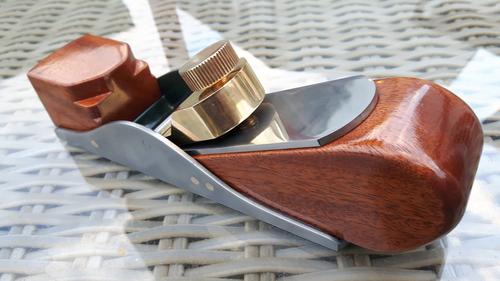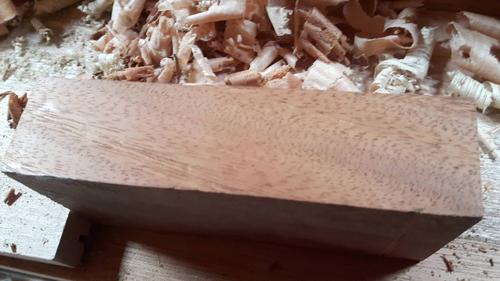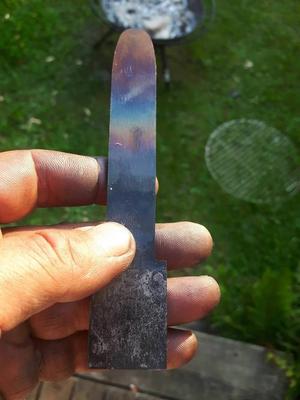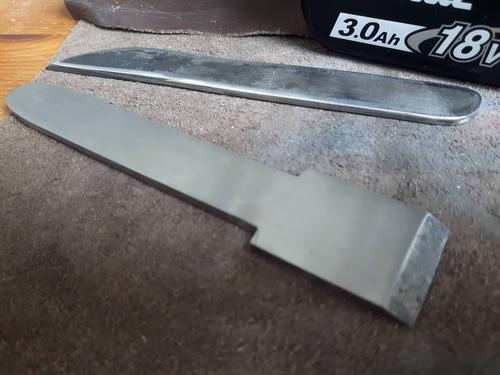As Nabs said, we had a discussion about laminated irons. Here it is - eight pages of it, and pretty well mannered and informative it was too.
laminated-irons-again-t108019.html
The relevant point for your purposes is that with a plane iron like your old Ibbotson one, it will be hard steel up to just shy of the bottom of the screw hole, with probably the whole thickness being hard steel up to that point. (There were tools where a surface layer of hard steel was welded to a backing layer of softer metal, but your iron won't be like that.)
Incidentally, I have posted pictures before showing the stock of shoulder plane irons in Bristol Design - the majority of these were made by cutting down old stock bench plane irons.


(Ignore the thin iron below, made from a hacksaw blade - that's what I was replacing.)
(You might also enjoy the thread where this picture appeared, where I was restoring a shoulder plane - a-rusty-sow-s-ear-t81175.html - and Mr P's attempt to cut down a plane iron - can-i-cut-a-block-plane-iron-down-to-fit-t89930.html.)
laminated-irons-again-t108019.html
The relevant point for your purposes is that with a plane iron like your old Ibbotson one, it will be hard steel up to just shy of the bottom of the screw hole, with probably the whole thickness being hard steel up to that point. (There were tools where a surface layer of hard steel was welded to a backing layer of softer metal, but your iron won't be like that.)
Incidentally, I have posted pictures before showing the stock of shoulder plane irons in Bristol Design - the majority of these were made by cutting down old stock bench plane irons.


(Ignore the thin iron below, made from a hacksaw blade - that's what I was replacing.)
(You might also enjoy the thread where this picture appeared, where I was restoring a shoulder plane - a-rusty-sow-s-ear-t81175.html - and Mr P's attempt to cut down a plane iron - can-i-cut-a-block-plane-iron-down-to-fit-t89930.html.)

















































































































